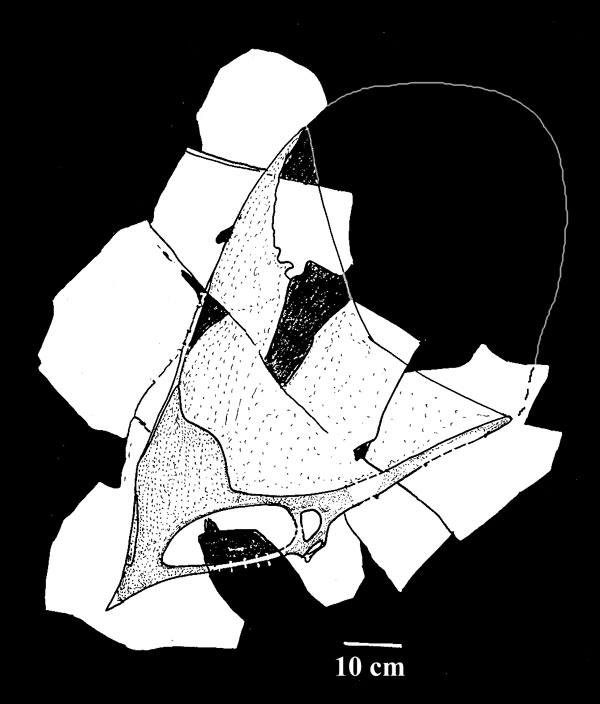
Genus: Tupandactylus KELLNER & CAMPOS, 2007
Etymology: Tupan
or Tupa, god of the thunder in the Tupian culture and Greek,
dactylus, "finger."
= Ingridia UNWIN & MARTIL, 2007
Etymology: In memory of Ingrid Wellnhofer, wife of Peter Wellnhofer, the leading
authority on pterosaurs for much of the last four decades.
Species: imperator (CAMPOS & KELLNER,
1997) KELLNER & CAMPOS, 2007
Etymology: Latin, imperator, "emperor."
= Species Nova KELLNER & CAMPOS, 1992
= Ingridia imperator (CAMPOS & KELLNER, 1997) UNWIN & MARTIL, 2007
Note: Both Kellner, et al, 2007 and Unwin, et al., 2007 renamed Tapejara imperator. Kellner & Campos paper was publshed two months before Unwin & Martill and therefore has priority. Also, Unwin & Martill place Tapejara navigans into thier new genus Ingridia as a seperate species, though Kellner et al., 2007 referre Tapejara navigans to Tupandactylus imperator. I'm following both Unwin & Martill and place Tapejara navigans as a sperate species of Tupandactylus.
Holotype: DNPM MCT 1622-R
Locality: Near Nova Olinda, Chapada do Araripe, Ceara State, Northeastern Brazil.
Horizon: Crato Formation, Araripe Group.
Note: Was Crato Member, basal unit of the Santana Formation, Araripe Group.
Biostratigraphy:
Age: Aptian-Albian Stage, Middle Gallic Subepoch, Upper Early Cretaceous Epoch, Early Cretaceous.
Material: Nearly complete skull with a large crest.

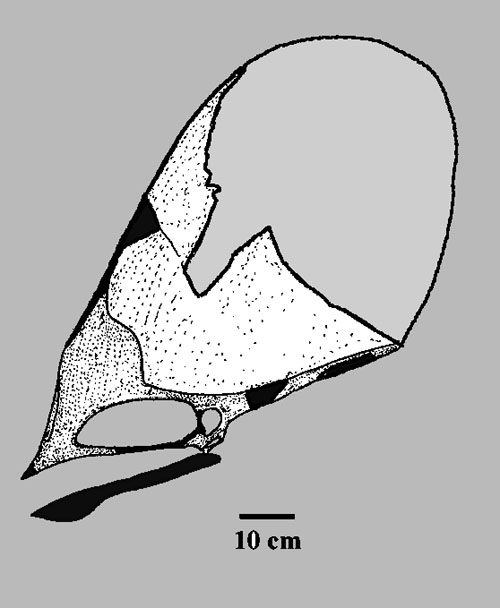
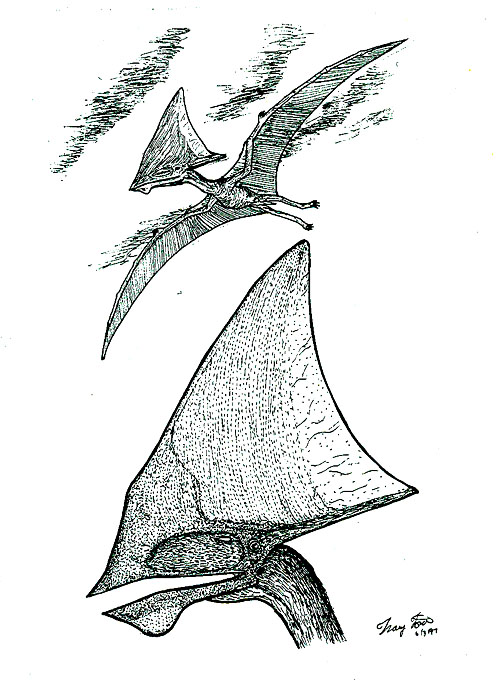
Referred material:
PINHEIRO, FORTIER, SCHULTZ, ANDRADE, & BANTIM, 2011
CPCA 3590: Fragmentary skull and fragmentary dentary.
SAYAO & KELLNER, 1999
MN 4729-V: Articulated left wing formed by scapulacoracoid, humerus, radius, ulna, incomplete carpal, wing metacarpal McIV, metacarpal III, parts of digits I-III, and complete 4th digit.
FREY, TISCHLINGER, BUCHY & MARTILL, 2003
SMNK PAL 2839: Fragmentary skull.
Note: Has crest fibers.
UNWIN & MARTILL, 2007Private collection: Fragmentary skull.
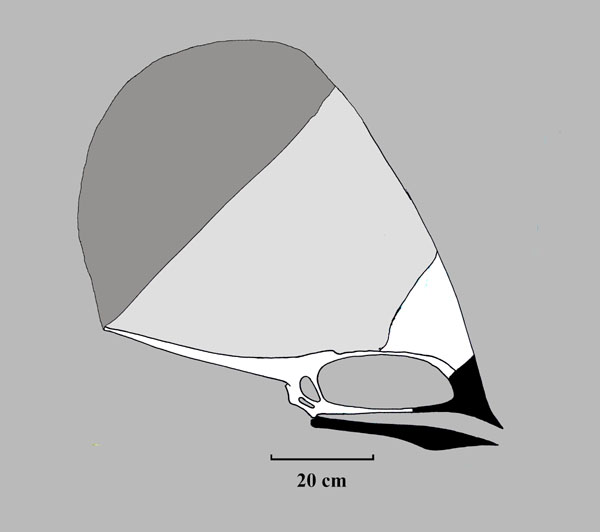
= Tupandactylus cf. imperator CINCOTTA, NICOLAI, CAMPOS, McNAMARA, D'ALBA, SHAWKEY, KISCHLAT, YANS, CARLEER, ESCUILLIE & GODEFROIT, 2022
Locality: Unknown, Chapada do Araripe, Ceara State, Northeastern Brazil.
Horizon: Crato Formation, Araripe Group.
Biostratigraphy:
Age: Aptian-Albian Stage, Middle Gallic Subepoch, Upper Early Cretaceous Epoch, Early Cretaceous.
Material:
MCT.R.1884: Partial skull and crest.
Note: With Soft tissue and feathers.
_____________________________________________________________________________________
Species: navigans (FREY, MARTILL & BUCHY, 2003b) PINHEIRO, FORTIER,
SCHULTZ, ANDRADE, & BANTIM, 2011
= Genus: Nova? FREY, MARTILL & BUCHY, 2003b
= Tapejara navigans FREY,
MARTILL & BUCHY, 2003b
Etymology: Latin, navigans, "sailing": pertaining to the shape
of the cranial crest.
= Ingridia navigans (FREY, MARTILL & BUCHY, 2003b) UNWIN & MARTILL,
2007
= Genus: Nova MARTILL & FREY, 1998
Holotype: SMNK 2344 PAL
Locality: Araripe Basin, Ceara State, North East Brazil.
Horizon: Nova Olinda Member, Crato Formation.
Biostratigraphy:
Age: Aptian Stage, Middle Gallic Subepoch, Uppermost Early Cretaceous Epoch, Early Cretaceous.
Material: Fragmentary skull, similar to Tapejara imperator.
Note: Specimen shows a flap of skin on the front of the skull and has no crest
extension behind the skull.
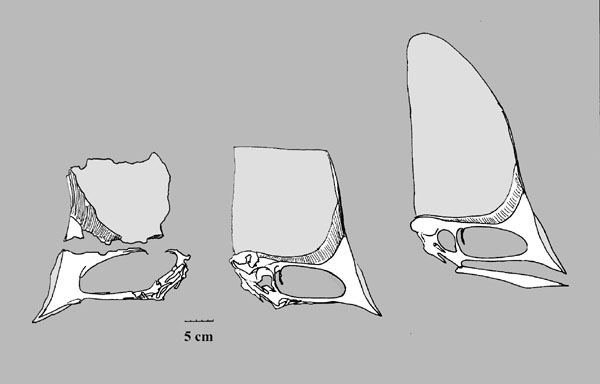
Referred material:
SMNK PAL 2343: Fragmentary skull.
Note: Specimen shows a flap of skin on the front of the skull and has no crest extension behind the skull.CAMPO, PINHEIRO, NUNES, ANELLI & COSTA, 2019, BECCARI, PINHEIRO, NUNES, ANELLI, MATEUS & COSTA, 2021
GP/2E 9266: Almost complete, well-preserved and articulated material.